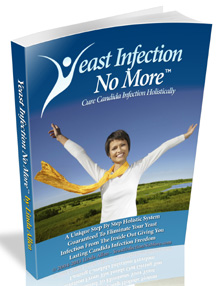What Yeast Infection Treatments Are Available?
Free Video Reveals 1 Weird Tip To Quickly Cure Your Candida Overgrowth & Enjoy Permanent Freedom From Yeast Infections In As Little As 12 Hours - Guaranteed!
>> Yeast Infection Guaranteed Treatment Click Here <<
Yeast infection treatments can be administered at home with prescription medication or potentially after recommendations from people who have experienced it. Treatment can take effect within a week. If your infection is not too severe, you can continue with your home treatment, but if you are experiencing heavy infections, it is important to consult your doctor. There might be some symptoms that means your particular infection is not appropriate for self-treatment or medication.
You can buy yeast infection treatments over the counter (OTC) in drugstores without a prescription from the doctor. Some examples of common treatments are: Miconazole, Tioconazole, Butoconazole and Clotrimazole.
These medications are known as the azole treatments, which block the production of ergosterol. Ergosterol is present in yeast cell walls. In the absence of ergosterol, the yeast cell wall deteriorates and the yeast cell dies. Azole treatments are proven safe to use and are known to effectively fight probable symptoms of yeast infection.
Nystatin and amphotericin B. are good treatments, which can be found in Polyene antifungals. Nystatin is known to be effective for superficial candidal infections and also for thrush while amphotericin B is reserved for more serious cases of fungal infection. These works by attacking ergosterol in the yeast cell wall.
These treatments are applied by topically over a period of 1-7 days, but always read the labels carefully for the correct application procedure. You should watch carefully in case irritation occurs. If it does, you should discontinue using the medication immediately. Pregnant women are not advised to use these medications without prescription from their doctors.
Other medical treatments include pills, creams, troches, lotions and vaginal depositories. To know the right and safe option, you should always seek the advice of your doctor.
OTC products are useful in treating vaginal yeast infections. They tend to be made up of four active ingredients that stop the spread of yeast infection. These drugs are part of the anti-fungal family, which works actively to stop and break down the cell wall of the Candida and bacteria. OTC treatments have been approved by the FDA to effectively stop forms of yeast infection, however, it is useful to be aware that antibiotics may disrupt the balance of healthy bacteria present in the vagina and intestine, which may lead to diarrhea, vaginitis and constipation.
It is important to carefully understand and take seriously yeast infection treatment. If it is your first time visiting your doctor regarding a yeast infection, you should be open and candid with the symptoms that you have as this will help the doctor determine if your infection is manageable or needs more serious treatments. When the doctor explains the effects and how the treatments can be handled properly, you should listen closely so that you can apply the treatment effectively. The use of vaginal suppositories and creams need the right dosage as if used incorrectly your infection may get worse.
Labels: penile_yeast_infection, picture_of_yeast_infection_in_man

